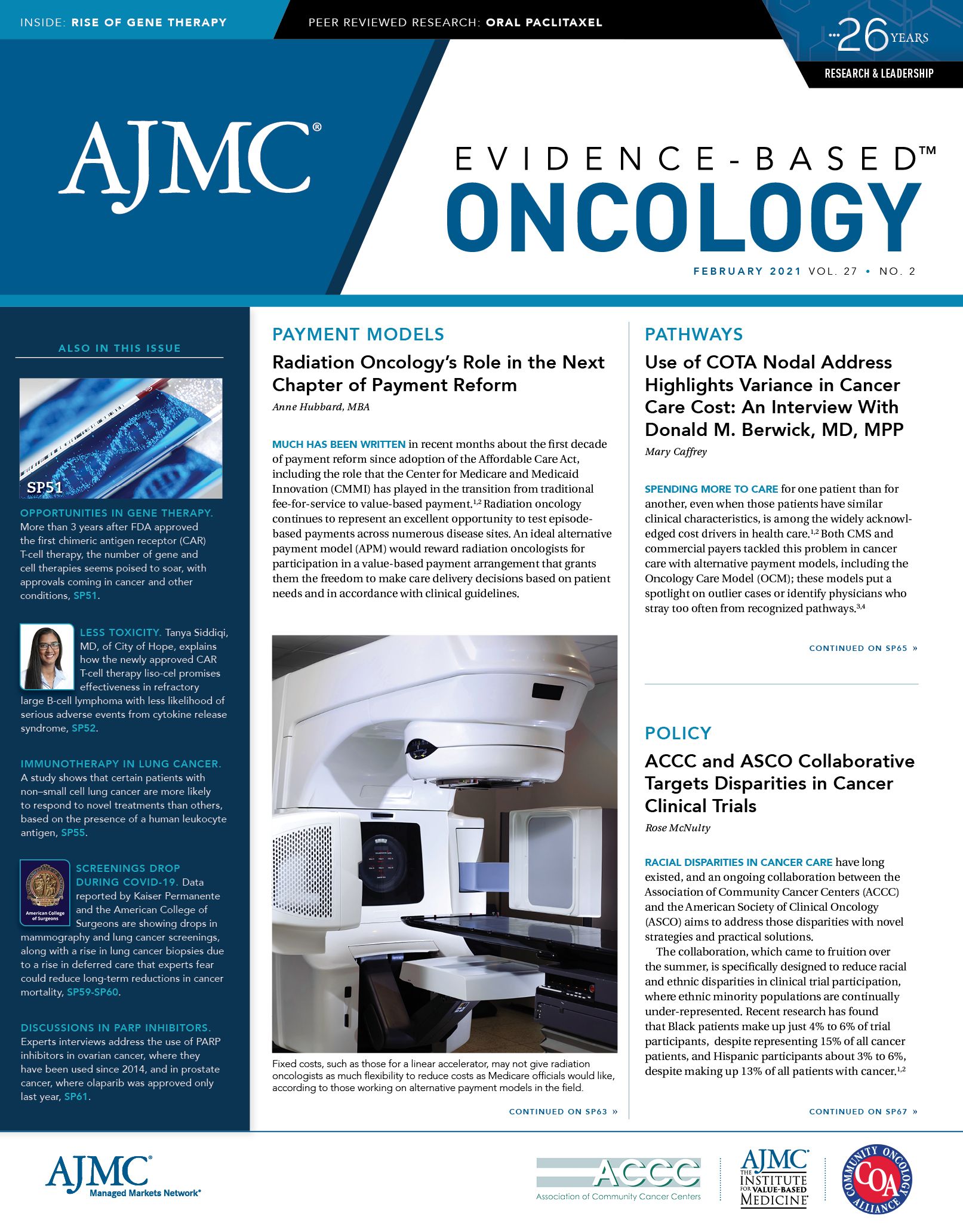- Center on Health Equity & Access
- Clinical
- Health Care Cost
- Health Care Delivery
- Insurance
- Policy
- Technology
- Value-Based Care
Proximity to Treatment, Racial Disparities Are Seen in Ovarian Cancer Survival
Patients with ovarian cancer who lived within 10 miles of Kansas’s only National Cancer Institute–designated cancer center, and those of a non-White race, were shown to have less of a survival advantage.
Patients with ovarian cancer who lived within 10 miles of Kansas’s only National Cancer Institute (NCI)-designated cancer center were shown in a recent study to have less of a survival advantage because of their location, according to the results published in The American Journal of Surgery.
Using a cutoff distance of 10 miles, the investigators found that patients with ovarian cancer who lived within that geographic area had worse overall survival, which was the study’s primary outcome. The effects of 3 distances were evaluated among 220 women (mean [SD] age, 60.6 [11.0] years) who received care at the University of Kansas Cancer Center (KUCC) between 2010 and 2015:
- Up to 10 miles (n = 49)
- 11 to 50 miles (n = 128)
- More than 50 miles (n = 43)
Although racial disparities in survival are well documented in the ovarianw cancer space, the impact on receipt and quality of treatment is not.
“The primary objective of this study was to determine if geographic distance from a single NCI-CC in Kansas (with a large catchment area that spans the entire state of Kansas and western Missouri) is associated with differences in survival,” the authors noted. “We predicted that like prior studies, distance traveled would be negatively associated with receipt of guideline adherent care and survival.”
International Classification of Diseases, Ninth Revision and 10th Revision codes confirmed a diagnosis of ovarian, fallopian tube, and primary peritoneal cancer. Patients were excluded if their chemotherapy or surgical staging was provided by another institution. Most (88%) of the patients were White.
The results show that more non-White patients (P = .0020) lived no more than 10 miles from the cancer center. In addition, at diagnosis, most patients had papillary serous histology (75%) and stage III disease (60%). The similarities seem to end there.
Optimal cytoreductive surgery was more likely to occur among the patients who lived more than 10 miles away compared with those who lived up to 10 miles away: 83% vs 65% (P = .0276). This despite 84% of patients overall undergoing the surgery. Patients who lived closer also had an increased mortality risk (HR, 1.61; 95% CI, 1.07-2.42; P = .0229) and a lower 5-year survival rate compared with those who lived farther: 36% vs 55%.
No difference in progression-free survival was seen when the distance was considered.
There was a surgical gap seen, too, when stratifying by race. Lower rates of optimal cytoreduction were seen among the non-White (Black, Asian, Latina, and “other”) patients vs the White patients and overall: 67% vs 81% vs 80%, respectively. These patients were also less likely to receive National Comprehensive Cancer Network guideline-adherent care: 78% vs 87% vs 85%.
“After controlling for age at diagnosis, non-White race, late stage at diagnosis, presence of comorbidities, median income, and suboptimal cytoreduction, geographic distance alone is not an independent predictor of worse overall survival,” the authors concluded. “[However], it could serve as a proxy for poor social determinants of health and accompanying aggressive tumor biology among patients.”
This is because fewer debulking surgeries happened among patients who lived within 10 miles of KUCC and more of these patients did not undergo surgery at all.
Reference
1. Petersen S, Shahiri P, Jewell A, et al. Disparities in ovarian cancer survival at the only NCI-designated cancer center in Kansas. Am J Surg. Published online December 7, 2020. doi:10.1016/j.amjsurg.2020.12.009

